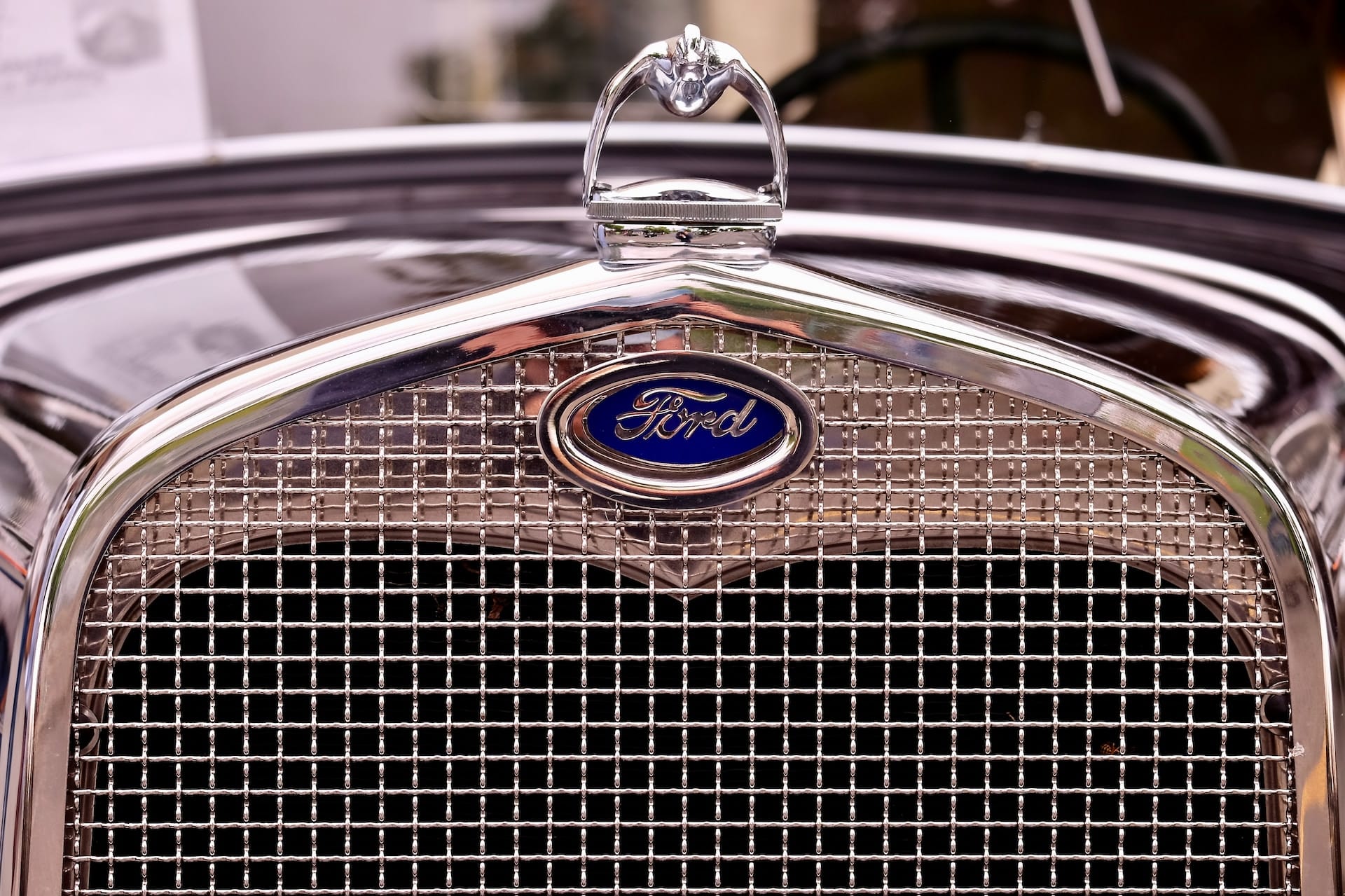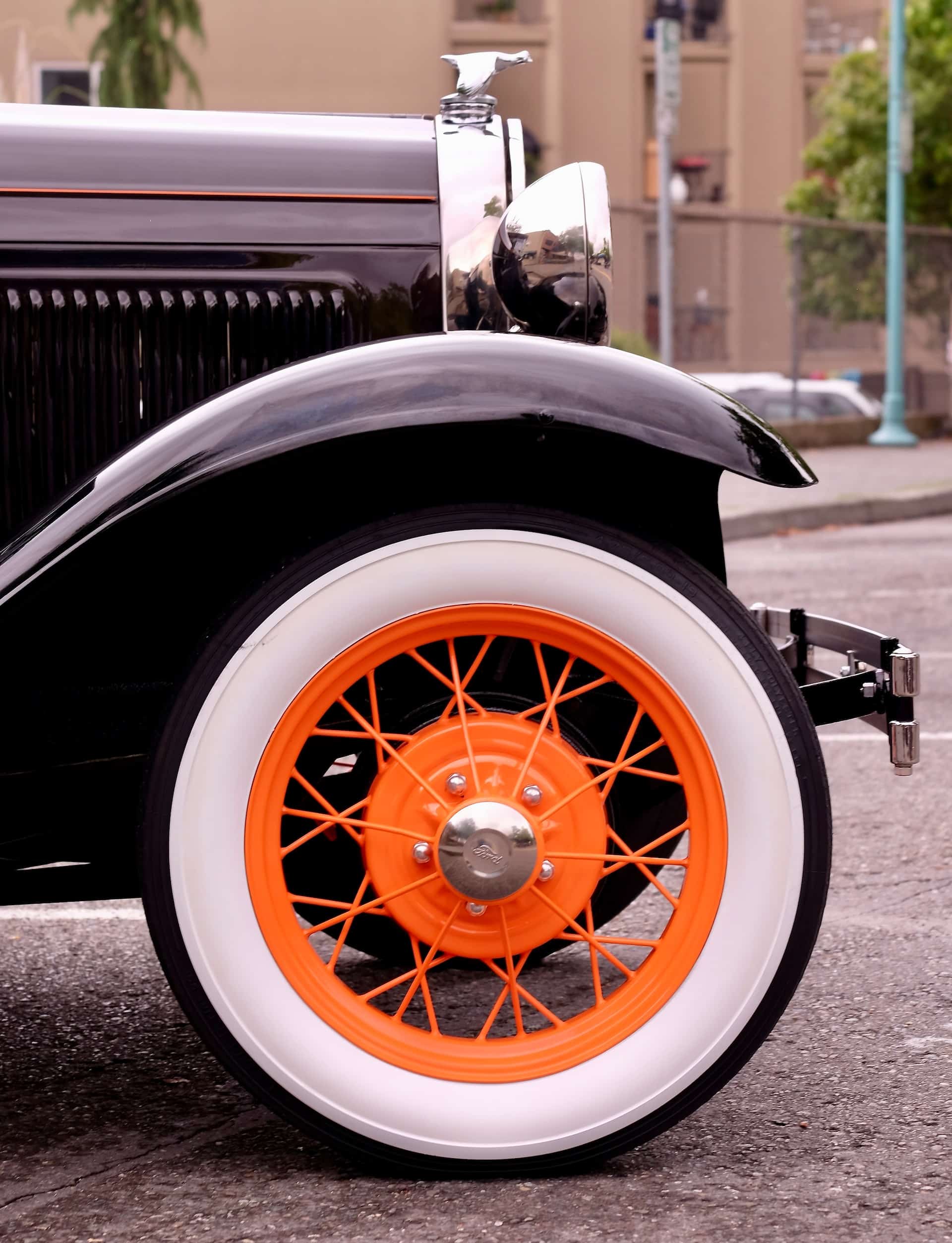The blue oval of the Ford Motor Company is an extremely recognized symbol amongst a sea of corporate icons from around the world. In marketing history, there is no other (vehicle) brand that has been as successful. The company produces passenger trucks, cars, accessories, and parts. The logo represents a company that is steeped in history, centering on its founder, Henry Ford.
This corporate mogul was responsible for developing the assembly line, a staple in the mass production method. Ford altered the automobile, but he also had a hand in shaping the act of transportation and the working life of a laborer. Let’s take a closer look at the history of the Ford Motor Company and the man behind it all.
IMAGE: UNSPLASH
Succession
In 1903, the Ford Motor Company was officially established by Ford and eleven investors. The business was reincorporated in 1919, by Henry, Clara (his wife), and Edsel (their son). They had full control of the company, and it was kept in the family (sole stockholders) until early 1956. This was the year that the sale of common stock was available to the public.
The Complete History
On July 30th, 1863, Mary and William Ford welcomed their son, Henry into the world, or Springwells Township, Wayne County, Michigan (to be exact). For eight years, Henry went to a school that consisted of only one room. When he wasn’t attending school, he would help his father on the farm with the harvest. As a teenager, he found work in the machine shops of Detroit.
During a time of three years, Henry was introduced to the internal-combustion engine. He spent most of his time working for the Westinghouse Engine Company (part-time) and working in a small machine shop that he constructed. This led him to build a “farm locomotive” which was a tractor that used an older mowing machine for its frame and was powered by a handmade steam engine.
Fast forward nine years and we see that Henry moves back to Detroit and is married to Clara Bryant. In November of 1893, she gives birth to Edsel Bryant, their only child. Only a month after that, Ford is appointed as chief engineer of the Edison Company plant in Detroit.
His job was to control the city’s electricity (24 hours). He didn’t work regular hours since he was on call, but that provided him the opportunity to experiment and tinker with things. Henry built the “Quadricycle” in 1896, a gasoline-powered vehicle that was built by putting a buggy frame on top of four bicycle wheels.
Many automotive inventors created self-powered vehicles, but Ford sold his creation to have money to build his second vehicle, and then a third, and so forth. He had tried twice to start an automobile manufacturing company, but they were unsuccessful until he established the Ford Motor Company in 1903. The very first Ford vehicle was built in a Detroit plant on Mack Avenue.
In the beginning, the Ford plant only built a few vehicles a day since they were assembled by hand. The workers used parts that were custom-made by different companies. The Model T was introduced in 1908. This was an example of how Henry Ford was successful in building an economical, trustworthy, and efficient vehicle. Also in 1908, the very first international branch of the Ford Company was opened in Paris, France.
Over a decade later, more than half of the cars in America were the Model T or “Tin Lizzie” and that had Henry creating assembly line production procedures. This included having massive assembly plants and common and compatible parts.
In 1913, the first moving manufacturing line for vehicles was implemented. In 1914, to increase efficiency, Ford upped the daily wage from two dollars and thirty-four cents for a nine-hour shift to five dollars for an eight-hour shift. This became the industry standard. Halfway through 1914, five hundred thousand Model T cars were being driven globally.
Near the end of the 1920s, Henry had manufacturing plants in Latin America, Europe, Canada, Australia, South Africa, and Asia. With fifteen million Model Ts built, the Ford automobile became the most popular brand of car. Ford attained the Lincoln Motor Company in 1922 (established in 1917) and it created luxury vehicles like the Continentals and Lincolns.
The last Model T car was assembled in 1927, making way for the Model A. Then, in 1932, the first Ford V-8 was introduced. After that, in 1938, the Mercury vehicle became available on the market. It was classified as an automobile in the price range between a Lincoln and Ford.
If you operate a Ford dealership and are looking to purchase supplies for your business, consider MBR Marketing. They are a leader in the auto dealer supply industry with thousands of supply items in stock for both the sales department and service department of your auto dealership.
This includes license plate screws, which are used by car dealers to secure the license plate to the vehicle during test drives and for long-term installation. Visit MBR Marketing for license plate screws and all your auto dealer supply needs at: https://mbrmarketing.com/dealer-supplies/license-plate-accessories/license-plate-screws.
Looking back at the 1910s and 1920s, in Dearborn Michigan, Ford started to build a huge industrial compound right along the River Rouge banks. Everything that was needed for producing vehicles made up this complex, including a steel mill, glass factory, and assembly line. The other stockholders at the Ford Company didn’t like the concept of building the River Rouge factory because the price tag associated with it was massive.
Since 1906, Ford owned almost fifty-nine percent of the business and bought the stockholders out. He put Edsel, his son, as president in 1919. Henry remained in charge of the business’s operations but returned as president of the company for a short period after, Edsel passed away in 1943.
Henry Ford II took over in 1945. Only a couple of years later, the original and renowned automaker, Henry Ford died at his home in Dearborn. He was eighty-three.
Modern Times
The Ford Motor Company comprises the brands Ford and Lincoln. At one time, Ford owned the affluent brands Volvo, Jaguar, Land Rover, Mercury, and Aston Martin made even more popular with its association with the James Bond movies. Over the years, those luxury brands were sold off to other businesses, and the Mercury vehicle ended its run.
At the end of 2008, the President at the time, George W. Bush declared that emergency funds were to be issued to save the “Big Three” giants of the auto industry. They included General Motors, Chrysler LLC, and Ford.
This financial aid would help America’s flailing auto industry. Out of the three, Ford secured other funding to continue manufacturing and didn’t need the government’s help right away. Unlike his counterparts, Ford avoided declaring bankruptcy. In fact, in 2009, the company excelled in sales and market share.
In 2016, initiatives like the Ford Smart Mobility were developed. It dealt with car-sharing, and self-driving cars. The next year, Ford announced that it was expanding its electric vehicles. In 2018, passenger cars at the company (excluding Ford Focus Active and Mustang) were being phased out.
Its attention shifted to pickups, SUVs, and crossover automobiles. From the late twentieth century to the early twenty-first century, the Ford F-Series pickups were the most popular vehicles in America.
What are the future financial forecast and outlook of the Ford Motor Company? There’s a reason why Ford has been around as long as it has. The brand is recognizable worldwide. Ford, over the years, seems to know how to evolve and progress for the better. Only time will tell if Ford still has the innovative and creative spirit that made it such a lucrative company and brand.
IMAGE: UNSPLASH
If you are interested in even more business-related articles and information from us here at Bit Rebels, then we have a lot to choose from.


COMMENTS